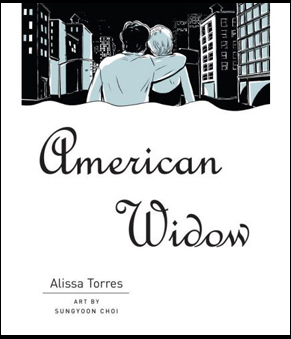Comic and Tragic
Today’s lecture explores two graphic novels about 9/11

During graduate school, Davida Pines stumbled upon Art Spiegelman’s Maus, a two-volume comic book about the Holocaust. She has been fascinated by comics ever since.
“I wondered at the time if there might be something wrong with being so captivated by a work on the Holocaust,” says Pines, a College of General Studies associate professor of rhetoric. “To this day, I open my classes on Maus by posing that question to my students.”
Pines will discuss the impact of comics that represent serious historic events and the relationship between form and content in the lecture History, Memoir, and Comics: Graphic Representations of 9/11 at the College of General Studies today, November 21. She will examine two graphic novels about the September 11, 2001, terrorist attacks: Speigelman’s In the Shadow of No Towers and Alissa Torres’ American Widow, which is a memoir of Torres’ actual experiences. Pines recently spoke to BU Today about comics and their impact on society.
BU Today: What significance do comics have in modern-day culture?
Pines: Modern-day culture bombards people with visual information. We encounter images constantly — on the Internet, on television, on video. Susan Sontag noted that newer technology, for example, digital imaging, has led to a “nonstop feed” of images. As a medium that draws on image and text simultaneously, the comics form is particularly suited to the representation of our current cultural moment.
Are comics an art form?
Absolutely. They combine visual and narrative art in increasingly complex and sophisticated ways. On the other hand, not all graphic narratives take full advantage of the immense creative potential of comics. The graphic adaptation of The 9/11 Report, for example, relies on images that simply illustrate, rather than augment, or perhaps even complicate, the accompanying text.
What purposes have comics served throughout the centuries, and today?
Entertainment, education, political and social commentary. A few years ago, a New York Times Magazine cover story predicted that comics would one day take the place of novels as “an accessible, vernacular form with mass appeal.”
Why did you choose to compare American Widow and In the Shadow of No Towers in your lecture?
Although both works use comics to represent the events of 9/11, their approaches are radically different. I was interested in exploring the different strategies that graphic artists use to represent tragic history. Torres’ work is quiet and contemplative, even as it contains a searing critique of the initial response of 9/11 family assistance programs. The images, drawn by Sungyoon Choi, are elegant; the colors are limited to black, white, and sea-foam blue. Spiegelman’s work, on the other hand, is anything but quiet. The colors are bold, and the severity of its critique of the Bush administration kept the work from being published in the United States until 2003.
In what ways do comics represent personal and public history?
Comics are a medium that permits artists to move easily from the personal to the public. This is particularly important when it comes to representing the impact of large-scale public events on individuals. Torres has said in an interview, “My tragedy is personal, but I am forced to discover its terrible dimensions on the nightly news, in the daily papers, and in every publication on the newsstand.”
In what ways can comics tackle serious issues with humor, and is this what makes them so effective?
The comics form is particularly good at irony. Images belie text, and in this way meanings multiply.
What led to your fascination with comics?
I was hooked after my first reading of Art Spiegelman’s Maus, a two-volume comic book on the Holocaust. I was a graduate student at the time, assigned to teach a writing section of a humanities course called Survival. It was a month before the fall semester started, and I took the books with me on a summer holiday, thinking that comic books on the Holocaust were not exactly the kind of beach reading I might have hoped for. Well, I read them both over the course of an afternoon. I never looked up.
Do you have a favorite comic artist?
I loved Alison Bechdel’s Fun Home. And I’m fascinated by the work of Chris Ware. But I always come back to Spiegelman.
Davida Pines will speak on History, Memoir, and Comics: Graphic Representations of 9/11 today, November 21, from 2 to 4 p.m. at the College of General Studies Katzenberg Center, Room 330A, 871 Commonwealth Ave. Admission is free and open to the public.
Vicky Waltz can be reached at vwaltz@bu.edu.
Comments & Discussion
Boston University moderates comments to facilitate an informed, substantive, civil conversation. Abusive, profane, self-promotional, misleading, incoherent or off-topic comments will be rejected. Moderators are staffed during regular business hours (EST) and can only accept comments written in English. Statistics or facts must include a citation or a link to the citation.